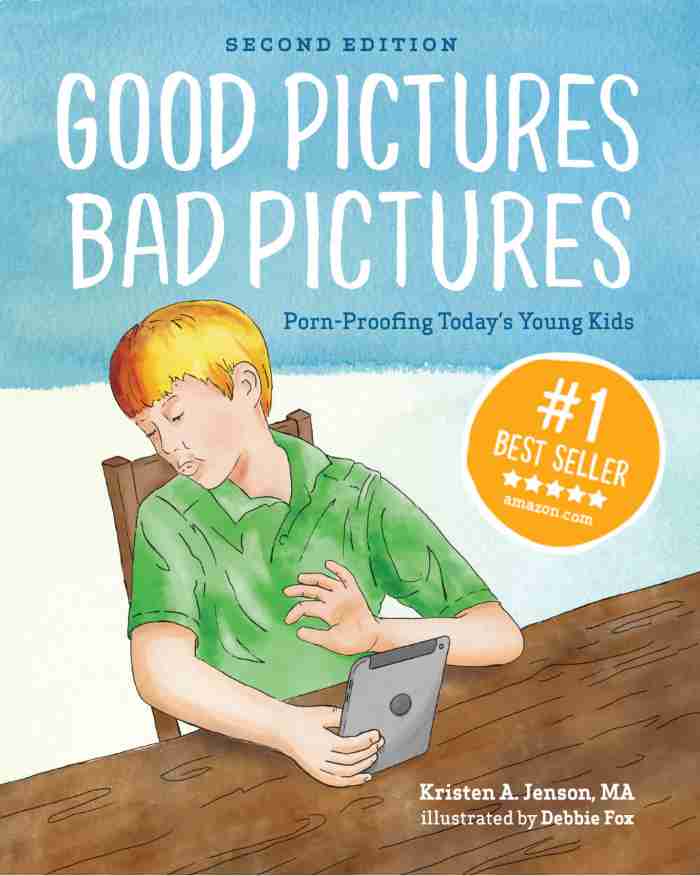
Gateway to Porn? Sexual Objectification in Video Games
Today’s post focuses on sexual objectification in video games. We talked with a gaming mom to get her take on the issue:
I first saw objectification in video games when I was about 10 years old, playing the newly released Tomb Raider with my cousins at a sleepover. The exaggerated body proportions of Lara Croft made us tween girls giggle uncomfortably, but I didn’t know why. Now as a mother with four children who love video games, I have a word to label that feeling: objectification. -Gaming mom
Sexual objectification in video games is still a big problem, but we can teach our children to identify it and fight against it. (Don’t miss our 7 tips for talking with kids below!)

What is objectification?
Objectification is treating a person as an object, usually for sexual gratification. When we objectify someone, we don't consider their needs, wants, personality, or inner life. Women are often objectified in the media, treated as a collection of desirable body parts rather than an individual. Female characters often exist only to be an object of desire for the male main character.
How common is objectification in video games?
In a word, pervasive.
Perhaps no character represents the objectification of female characters better than Lara Croft of the Tomb Raider video game series. In the original game released in 1996, Lara Croft has exaggeratedly large breasts and hips with a tiny waist. She wears a sports bra and hot pants, even though she is an Indiana Jones-like adventurer and archeologist, jumping from ledges and climbing vines.
According to Teresa Lynch, a media communications researcher at Indiana University, Lara Croft’s ridiculous physique started out as a joke among the mostly male developers and continued into the published game. When the video game industry started in the 1980s, the majority of video game programmers were male, and “jokes” like this happened all the time.
The assumption was that video game players were men and that objectified female characters would sell games. You can even see the difference in attitude toward female characters by comparing the original PAC-MAN, a generic yellow pie, versus Ms. PAC-MAN in the sequel, who features heavy makeup and long shapely legs.
Though Lara Croft has been made over in recent games to reduce the ridiculousness of her figure and give her more suitable clothing, finding characters to replace her is not difficult. Most of the female characters in fighting games, such as Soul Calibur 6, wear little more than lingerie while male characters wear costumes more appropriate to battle. The adventure game Bayonetta features the titular protagonist losing more and more of her clothing as she learns more powerful attacks. The list goes on and on. Video game companies even created specialized "boob jiggle physics" engines to further the “realism” of their objectified characters.
Fighting back against objectification in games
In 2014, a movement by female gamers and feminist critics sought to address the overwhelming problem of objectified female characters. Anita Sarkesian, on her site Feminist Frequency, created a video series entitled “Tropes vs Women in Video Games” criticizing common objectifying tropes in games.
The resulting backlash was called Gamergate. Outspoken male gamers participated in a campaign of cyber harassment and even death threats against Sarkesian and anyone else who questioned the role of female characters in games. This problem brought to light just how poisonous the community could be towards women.
Other parts of the video game community have begun to learn from and fix their objectification problems. Some great games featuring realistic female protagonists have come out recently. 2018’s indie platformer sensation Celeste is a great example of a game that not only put its female protagonist in appropriate clothing but gives her an internal life and mind.
Related: Four Messages to Help Girls Reject Porn's Fake Beauty
How does objectification affect us?
Objectification is prevalent across magazines, television, and movies, so perhaps it's no surprise that it would end up in video games. However, video games differ from other media: they are active rather than passive. In a game, you control the character herself or interact with her directly. Perhaps as a result of this, video games can have an outsize impact on our perceptions of the world.
Studies show that objectification in video games has psychological impacts on both men and women. Men who played video games that objectified women in a lab had an increase in their sexist beliefs in real life. They also showed an increase in belief in "cultural rape myths," like that women who dress a certain way want or deserve sexual violence. Other studies show that objectification in video games increases violent sexism towards women.
Women also are negatively affected by video games that objectify women. Playing these games reduced women's sense of self-efficacy, the sense that they had control over their life. The video games also increased their self-objectification, viewing their body as an object of desire by other people rather than a useful tool to do things in the world.
Related: Your Daughter’s Body Image – Healthy or Shameful? 4 Ways to Counteract Toxic Media
[[CTA]]
7 Tips for Talking about objectification with kids and teens
So what's a parent to do? Keep kids away from video games entirely? Chances are, even if you keep video games out of your house, kids will be exposed to them at friends' or relatives' houses.
My parents only allowed the tamest of educational games in our home, so I was unprepared for the games I met at my cousins’ house. -Gaming mom
And not all video games are bad, just like not all TV shows or movies are bad. They are a popular way for kids to socialize, and they can be used to build relationships.
Here at Protect Young Minds, we advocate for helping kids develop an internal filter. You can do the same with video games. Here are a few doable steps you can take to help your kids be smart about their video games:
- Start with age appropriate video games when kids are young. Steer young kids towards puzzle-based, educational games with no characters or games featuring age-appropriate characters. These are great alternatives to games with more questionable messages about women (and greater amounts of violence).
- Talk together about your values around video games. Video games are a hobby, a distraction, just like TV shows, movies, and even books. Discuss what things are more important than video games in your family. Set down rules together about how much and what types of games you will play.
- Review video games before allowing your children to play them. Check out our guide for reviewing a video game in 4 quick and easy steps.
- Talk with your child about what you observe about the appearance of the characters. Do the characters look like people you know in real life? Or do they look like they stepped out of a Marvel movie or fashion magazine? How does the clothing of female characters compare with male characters? Would you feel comfortable talking to them? Why or why not?
- Discuss how the characters interact with each other. Do the female characters have a variety of personalities? Are they there just as window dressing, to be rescued, or as a reward for the player? Does the game pass the Bechdel test?
- Talk about how the game treats the characters. Does the camera linger on certain parts of the character's bodies rather than their faces? Are the female characters active or passive? What do you think the game wants you to think about the characters?
- Consider any online interactions the game may have. Many female gamers are objectified and sexually assaulted by male players, partly because of the culture that exists around these games. If you and your teen are both comfortable with them interacting with others online, talk about appropriate behavior and respect. Make sure your child knows safety rules about not giving personal information online. Have online games played in a public area. And teach them how to report harassment of themselves or others—a simple internet search should yield the information.
Related:
Police Mom Reveals Secret Weapon to Protect Kids from Porn
#MeToo — 10 Ways Predators Are Grooming Kids
Discussing objectification with kids will help them make smart decisions about video games as well as all media. This is also an opportunity to teach kids to be responsible consumers. Teach kids that playing games that objectify women supports and perpetuates the problem. Choosing games that don’t objectify women supports the companies that are trying to change the culture of objectification in video games.



Good Pictures Bad Pictures
"I really like the no-shame approach the author takes. It's so much more than just 'don't watch or look at porn.' It gave my children a real understanding about the brain and its natural response to pornography, how it can affect you if you look at it, and how to be prepared when you do come across it (since, let's face it... it's gonna happen at some point)." -Amazon Review by D.O.






